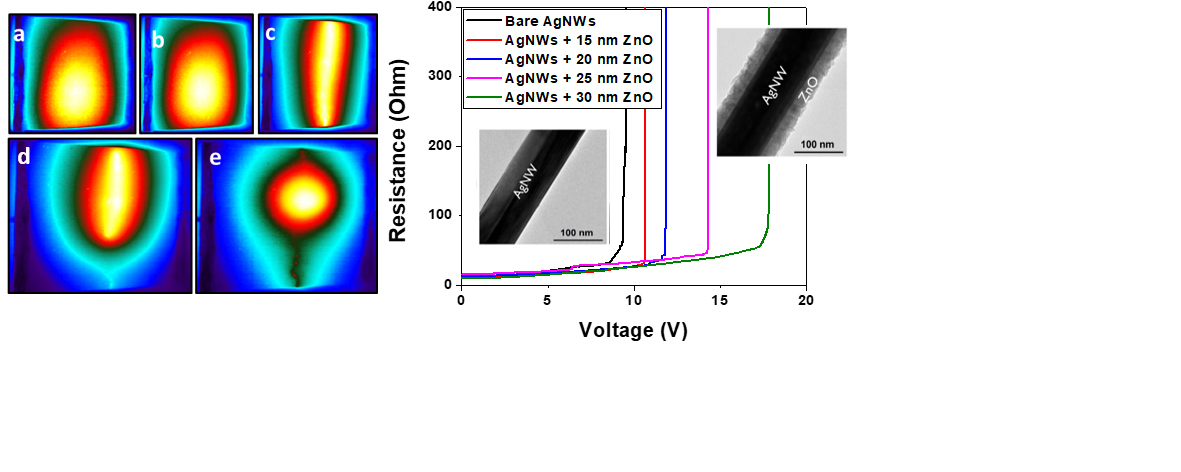Innovative electrode based on metallic nanowires network: a multiscale research framework
Innovative electrode based on metallic nanowires network: a multiscale research framework

 Daniel Bellet's team study the impact of several parameters (AgNW sizes, network density [Lagrange 2015], thermal annealing [Langley 2014]…) on the physical properties of AgNW networks [Sorel, 2014]. We aim to propose a comprehensive analysis of the evolution of AgNW networks properties as well as their electrical and thermal stability; the latter being important for integration into devices.
Daniel Bellet's team study the impact of several parameters (AgNW sizes, network density [Lagrange 2015], thermal annealing [Langley 2014]…) on the physical properties of AgNW networks [Sorel, 2014]. We aim to propose a comprehensive analysis of the evolution of AgNW networks properties as well as their electrical and thermal stability; the latter being important for integration into devices.